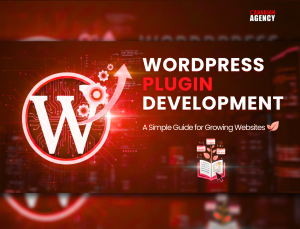In today’s fast-paced digital landscape, blending the best of both worlds—content management and user experience—is more critical than ever. That’s why pairing a mature, content-friendly system like WordPress with a modern, high-performing frontend framework like React.js is increasingly a game-changer for modern web development. Below, we’ll explore why this combination has gained momentum, what it offers, and how it can be applied in real-life projects, including our own recent work.
The Rise of Decoupled (“Headless”) Architecture
Traditionally, WordPress has served as both the content management system (CMS) and the frontend renderer: you log in to the WordPress dashboard, publish a page or post, and WordPress uses PHP themes/plugins to render the view.
However, as user demands have grown—faster load times, more interactive experiences, and multi-channel delivery—the classic WordPress setup begins to show its limits.
Here’s where using React on the frontend, and WordPress as a content backend (often referred to as “headless” or “decoupled” architecture), comes into play. In this setup, WordPress remains the engine for creating and organising your content; React handles the UI, fetching data via WordPress’s REST API (or GraphQL) and presenting it with modern tooling.
Why React + WordPress = Multiplying Benefits
Performance & User Experience
React and other frontend frameworks flourish in dynamic, interactive settings. Efficient updates, seamless UI transitions, and faster load times are made possible by React’s virtual DOM and modular component architecture.
In the meantime, the frontend may be optimised for speed, responsiveness, and contemporary UI paradigms because WordPress prioritises content over rendering. This is important because users anticipate almost immediate responses. Both customer enjoyment and SEO are enhanced by a quick website.
Flexibility in Design & Development
One of the constraints of classic WordPress theme-based development is that you’re often limited by the theme’s architecture, plugin conflicts, and page builders. However, when React handles the UI, you gain full freedom, including custom animations, real-time interaction, rich component libraries, and a development workflow familiar to modern frontend teams.
For developers, this means: reusable components, cleaner code, easier maintenance, and faster iteration.
Content-Management Still Familiar & Powerful
The content creators or marketing team don’t lose anything—they can keep using WordPress’s dashboard to write posts, upload media, schedule content, manage taxonomy, etc. All the familiar CMS workflows stay intact. The difference is that the frontend, which presents that content, is more modern.
That dual advantage—advanced frontend + established CMS—makes it a compelling choice.
Scalability, Future-Proofing & Multi-Channel Delivery
Since your frontend is decoupled, you’re free to evolve it (or even replace it) without disrupting the WordPress content layer. Want to build a mobile app, a kiosk display, or a PWA later? The same WP backend can serve content across channels via API.
Furthermore, the division improves security (frontend is isolated from WordPress vulnerabilities) and more successfully accommodates increased traffic, intricate user interfaces, and changing business logic.
Practical Considerations & Challenges
Of course, it’s not entirely without complexity. The decoupled route adds architectural overhead: you’ll need to manage data fetching (APIs), routing, state management, SSR/SSG (for SEO), build pipelines, and deployment for the React app.
SEO can also become trickier: client-side rendering alone may lead to indexing issues, so using server-side rendering (SSR) or static generation (SSG) via React frameworks (e.g., Next.js) is often recommended.
And finally, your team must be comfortable with JavaScript frameworks and the build/deployment ecosystem. For simpler brochure sites, classic WordPress may still suffice—but for growth, interactivity, and speed, React + WordPress stands out.
How We Applied It in Practice
In one recent project, we used this exact methodology. The project linked here — see case study — leveraged WordPress as a robust content backend, while the frontend was built using React to deliver a fast, dynamic, and engaging user experience.
Here’s what we achieved in practice:
WordPress remained as the content hub, enabling editors to easily update content without needing developer intervention.
The frontend React application pulled content via WordPress REST APIs, rendering pages using a modern component-based architecture, which reduced load times and improved interactivity.
Because of the decoupled architecture, the project was future-ready; new modules and features could be added without rewriting the CMS layer.
The result: a site that delivered both ease of content management (thanks to WordPress) and a modern user experience (thanks to React).
This real-life example demonstrates how the combination we’re discussing isn’t just theoretical—it’s practical, scalable, and effective.
Key Steps to Implementing React + WordPress Successfully
If you’re considering this approach for your next project, here’s a high-level roadmap:
Define Requirements
What kind of user experience are you looking for? To what extent will the website be interactive?
Which content workflows need to be kept up to date?
Choose Your Stack
Use WordPress (headless or semi-headless) as the backend for your content.
Construct the front end with React, with the option to use Gatsby or Next.js for SSR/SSG.
Set Up WordPress for API Use
Configure the WP REST API (or GraphQL) for access to posts, pages, and custom post types.
Ensure content creators’ workflows remain consistent.
Develop the React Frontend
Create reusable components, manage state, routing, and data fetching.
Utilize SSR/SSG to enhance SEO and improve performance.
Optimize for performance (e.g., lazy loading, code splitting, etc.).
Integrate & Test
Ensure the React frontend properly fetches and renders WP content.
Test performance, SEO, responsiveness, accessibility.
Ensure editorial workflows are maintained and editors are comfortable with WordPress.
Deploy & Monitor
Deploy the WordPress backend and React frontend (separate deployments are acceptable).
Monitor site speed, user behaviour, and content management workflows.
Iterate as needed—one of the benefits is ease of adding new features without significant rewrites.
Why It’s a Game-Changer for Modern Web Development
When you look back a few years, websites were increasingly static, slow, or weighed down by heavy plugins and monolithic architectures. Today’s expectations are different: users expect seamless transitions, instant feedback, mobile-friendly interactions, and high performance.
By combining WordPress and React:
- You get a future-ready architecture—the content layer and presentation layer evolve independently.
- You keep editorial simplicity—non-technical users still manage content via WordPress.
- You deliver high performance and dynamic UX—thanks to React’s capabilities and modern frontend engineering.
- You gain scalability and flexibility—whether it’s new features, high traffic, or multi-platform delivery.
As described in multiple recent articles, this hybrid model is increasingly seen as the next step for content-rich websites and interactive applications.
In short, it’s not just about adopting React or WordPress—it’s about leveraging the strengths of both. This leads to a better outcome for end-users, content owners, and development teams alike.
Final Thoughts
If you are building a website or web application today and want:
- fast performance
- modern interactive UI
- editorial ease and content management
- future scalability (for mobile, apps, multi-channel)
The combination of WordPress and React deserves serious consideration.
And if you’re looking to see how this works in the real world, our recent project (case study link) illustrates how this architecture can be applied end-to-end with success.
Going on, consider this: How much will my website need to grow? To what extent must the frontend be interactive? What degree of control is necessary for content editors? The React and WordPress approach is probably going to be revolutionary if the response indicates growth/scale, robust content workflows, and dynamic UX.




